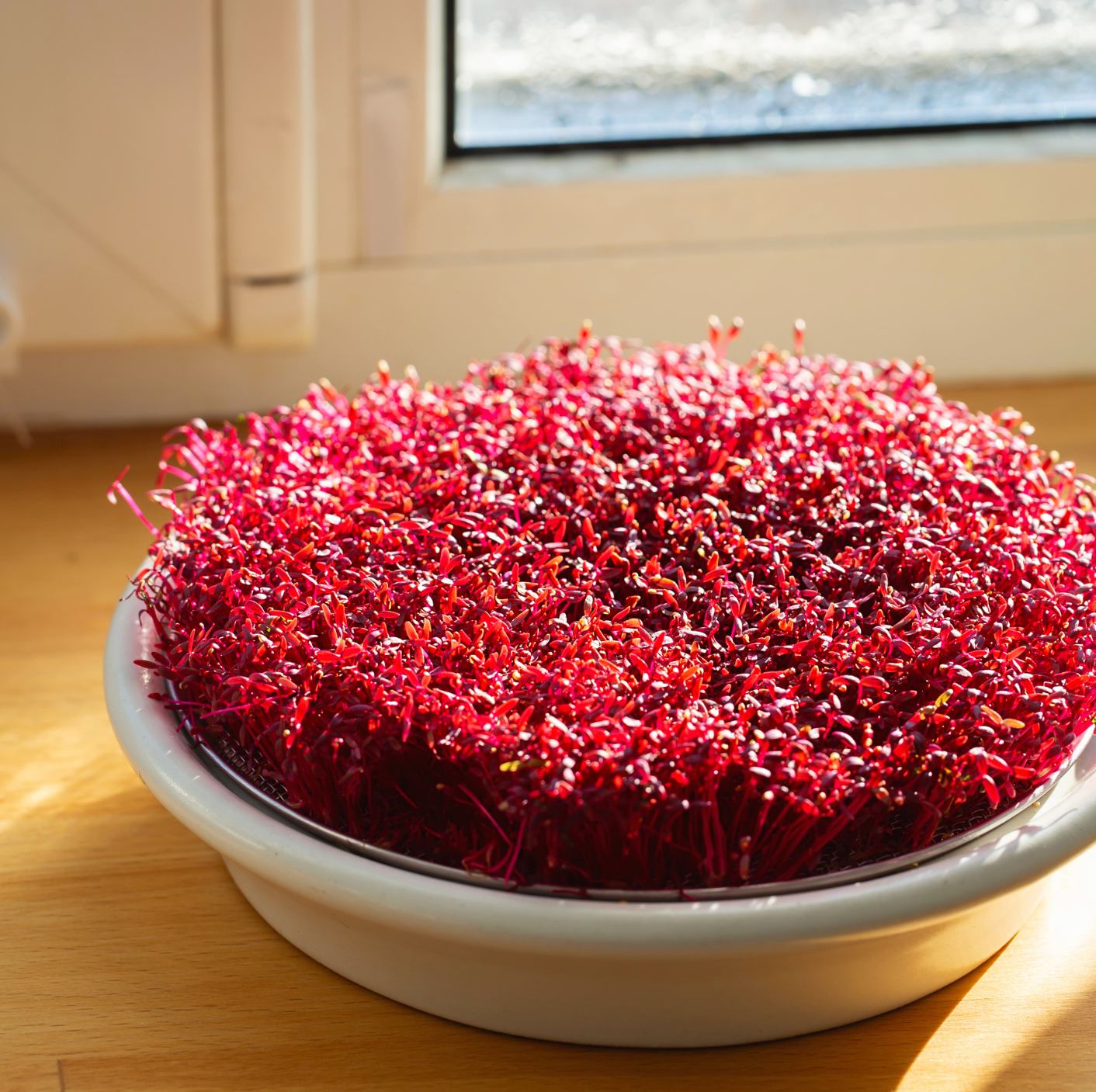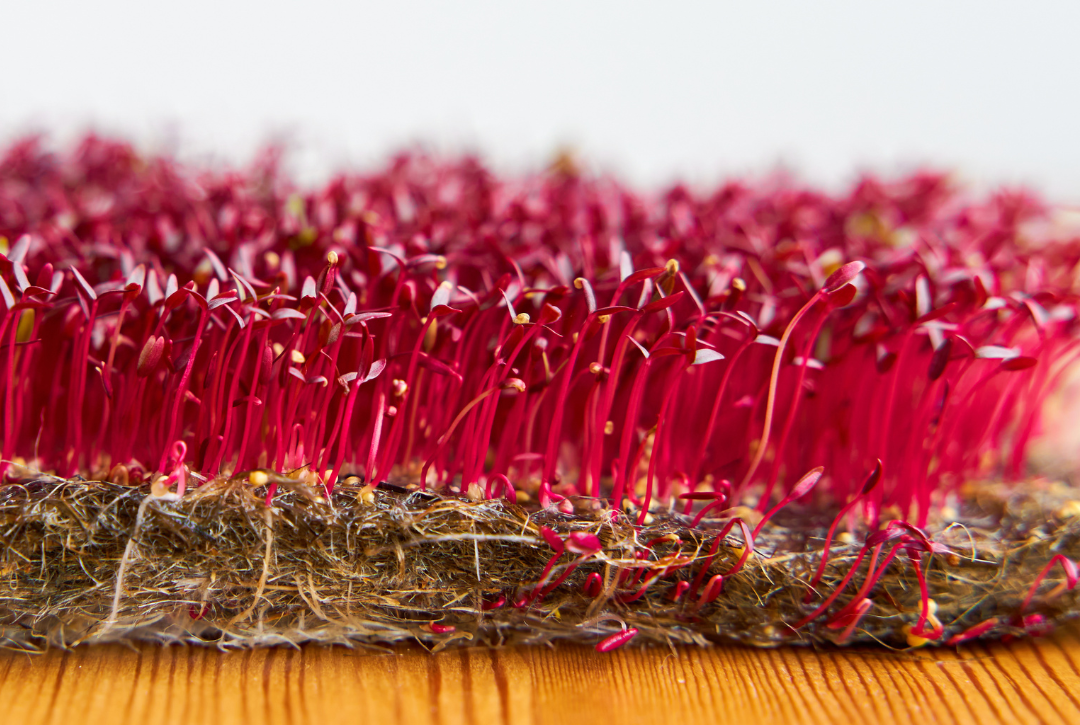AMaranth
Amaranth microgreens have the highest vitamin K concentration of all microgreens.
They are a source of manganese which aids digestion by activating enzymes in the body.

Crop:
Amaranth
Growth Period:
10-14 Days
Humidity Needed:
50-85%
Nighttime Temperature:
12-25 °C
Plant Height:
5-15 CM
Type:
Microgreen
Light Per Day:
12-18 Hours
Daytime Temperature:
16-27 °C
Ideal Seed Density:
50 g/m²
Required Substrare pH:
5-8
Growing amaranth microgreens is relatively easy. Simply sow the seeds at the correct density on a moist growing medium, and keep them in an environment at a suitable temperature with the recommended amount of daily light. Regular watering and good airflow are essential. They typically germinate quickly and are ready for harvest in about 10-14 days. Cultivating your own amaranth microgreens supports sustainable food choices and they are relatively low-maintenance, making them suitable for various skill levels. Amaranth microgreens are suitable for small spaces and indoor cultivation, making them accessible for urban farming. Microgreens also require fewer resources compared to mature crops, promoting sustainable agriculture and the premium prices they command can lead to a profitable venture. Amaranth microgreens are nutritional powerhouses packed with essential nutrients. In just a small serving, they provide an abundance of vitamins, minerals, and health-promoting compounds. These microgreens are particularly rich in vitamin K, which supports blood clotting and bone health, and vitamin C, a potent antioxidant that boosts the immune system. They also offer a good dose of folate, essential for cell division and DNA synthesis. Amaranth microgreens are a source of minerals like potassium, magnesium, and calcium, crucial for heart and bone health. Additionally, they contain dietary fibre and various phytonutrients, including flavonoids and carotenoids, which have antioxidant and anti-inflammatory properties, contributing to overall well-being. Amaranth microgreens offer a mild, earthy flavour, and are used most often in salads and garnishes.
